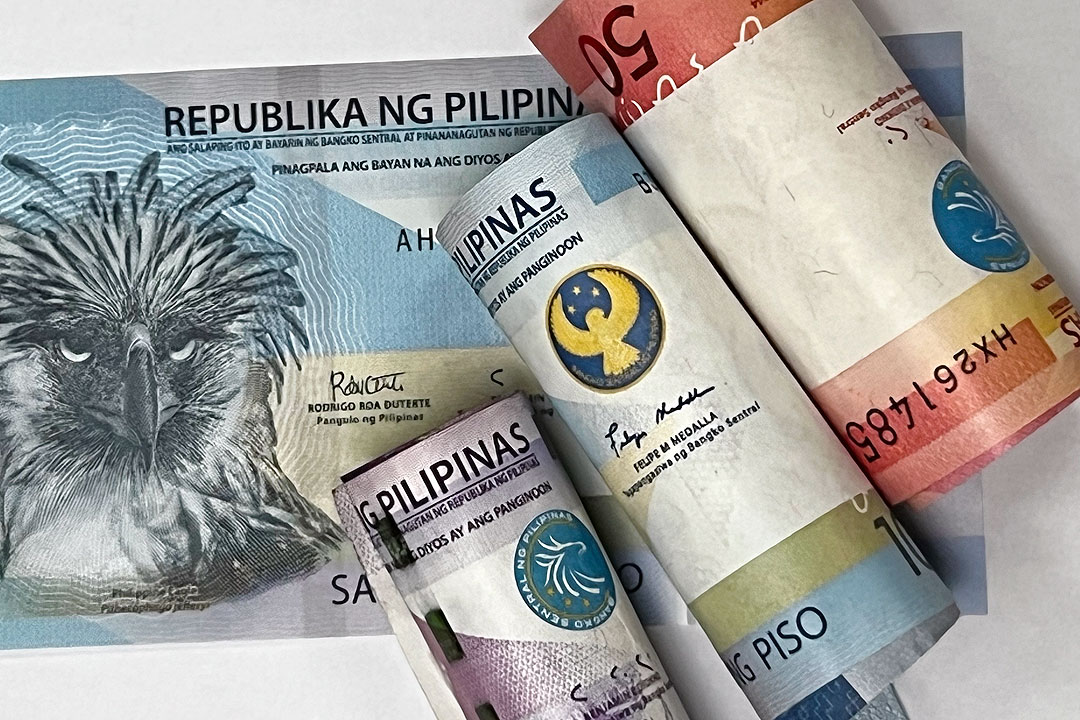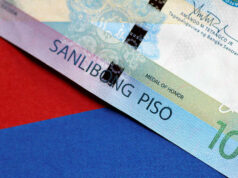
EXPORTERS said the pace of the peso’s appreciation could have negative consequences for their businesses, and added that the industry is currently trying to determine an appropriate and balanced exchange rate.
Philippine Exporters Confederation, Inc. President Sergio Ortiz-Luis, Jr. said the industry group is conducting a “quiet” consultation and plans to convey the resulting consensus to the Bangko Sentral ng Pilipinas (BSP).
“Right now, we cannot determine what to recommend as the assumptions continuously change depending on Trump’s pronouncements,” he added.
He noted that the peso’s strength is also a matter of concern to many Filipinos “because we have a lot of overseas workers.”
As such the BSP really needs to balance the exchange rate… to at least protect the OFWs,” he added.
The peso closed at P55.42 against the dollar on Monday, after finishing at P55.25 on Friday.
Year to date, the peso has appreciated by 4.38% since finishing at P57.845 on the last trading day of 2024.
He called P55.20 a “strong” level for the peso. The currency first strengthened past the P56 level on April 30, when it closed at P55.840.
“For a lot of exporters, it is already strong. I just cannot say (what level it should be) … but we have to balance it with the rest of the economy,” he added.
He said that at the moment, Philexport still expects exports to hit the target set by the Philippine Development Plan (PDP) for 2025 while missing the more ambitious target set by the Philippine Export Development Plan (PEDP), even with US tariff policy upending trade.
Under the PDP, goods and services exports are expected to hit $113.42 billion, while the PEDP forecasts exports of $163.6 billion.
US President Donald J. Trump announced reciprocal tariffs on most of its trading partners, assigning a 17% tariff on Philippine goods, the second lowest in Southeast Asia. These rates have since been suspended, with a 10% “baseline” rate currently in force for most countries.
Mr. Ortiz-Luis said the wearables, furniture, and agriculture industries are expected to take a hit from the tariffs.
“Even before the US announcement on April 2, you have to remember that my industry was already in trouble because we have about 5,850 tariff lines,” according to Confederation of Wearables Exporters of the Philippines Executive Director Teresita Jocson-Agoncillo.
“We are not enjoying any preferential status compared to electronics,” she added.
She said that even without the reciprocal tariffs, apparel exports to the US already face a 17-32% tariff.
“So this is a very critical moment for the industry … But if Cambodia and Vietnam get a (tariff) higher than 17%, then we still can survive. As long as my ASEAN counterparts have a higher number, there is a silver lining,” she added.
Cristjan Dave Bael, Semiconductor & Electronics Industries in the Philippines Foundation, Inc. associate business lead for External Affairs, said the industry has yet to see the impact of the reciprocal tariffs.
“As of March, we had an uptick of 2%, so it became $3.96 billion, and 15.4% of this goes to the US,” he said.
“We have yet to see the impact in terms of value, but definitely, when Trump announced the tariffs, we already heard from our members that orders increased from the US,” he added. — Justine Irish D. Tabile



